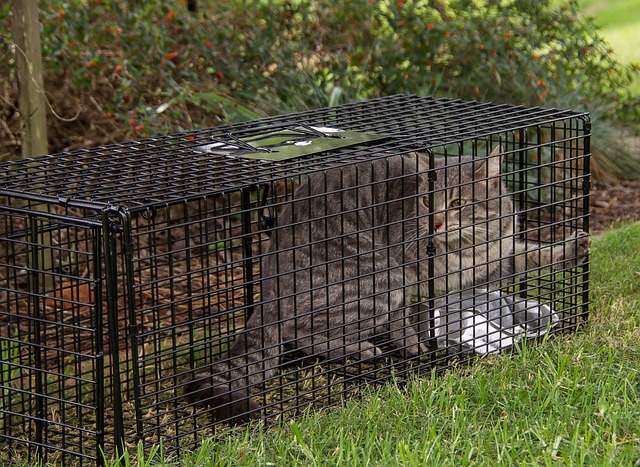Commercial pest control is a specialized service addressing unique challenges of diverse business environments from food service to warehouses. Each sector faces specific pests like flies, roaches, rodents, ants, termites, birds, and bats. Professional services offer customized plans using advanced techniques and eco-friendly methods, focusing on prevention, regular inspections, targeted treatments, and rapid response. By emphasizing Integrated Pest Management (IPM), these strategies reduce costs, minimize environmental impact, and foster a productive workspace, ensuring a safe, hygienic environment through tailored Commercial Pest Control solutions.
In the dynamic landscape of commercial spaces, effective pest management is more than just an added service—it’s a strategic necessity. This comprehensive guide delves into the intricacies of Commercial Pest Control, exploring unique challenges and tailored solutions. We emphasize the significance of customized plans that align with specific business needs, detailing key components for robust protection. From identifying common pests to leveraging professional expertise, this article equips you to implement and monitor an optimized commercial pest control strategy.
Understanding Commercial Pest Control: Unique Challenges and Solutions

Commercial pest control presents a unique set of challenges compared to residential settings. Businesses operate in diverse environments, from food service establishments to office buildings and industrial warehouses, each with its own specific pest issues. For instance, restaurants face insects like flies and roaches that can contaminate food sources, while warehouses may struggle with rodents seeking shelter among stored goods.
Customized commercial pest plans are essential to address these challenges effectively. Professional pest control services tailor solutions to each business’s unique needs, employing advanced techniques and environmentally friendly methods. Regular inspections, targeted treatments, and prevention strategies ensure a safe, hygienic, and productive workspace while mitigating the risks associated with pest infestations.
Why Customized Plans Matter: Tailoring to Your Business Needs

In the realm of commercial pest control, one-size-fits-all approaches simply don’t cut it. Every business operates uniquely, with distinct challenges and requirements when it comes to pest management. That’s why customized commercial pest plans are paramount for effective and long-lasting protection. These tailored strategies acknowledge that a textile store’s needs differ vastly from a food processing facility’s, for instance.
A customized plan considers the specific types of pests prevalent in your industry, the structural layout of your premises, and unique business practices that may attract or harbor pests. By addressing these factors, professionals can implement targeted treatments, ensuring maximum efficiency while minimizing environmental impact. Such personalization leads to better pest control, reduced costs, and a more productive working environment for everyone.
Key Components of a Comprehensive Commercial Pest Plan

A comprehensive commercial pest plan is a strategic approach designed to mitigate and eliminate pest-related issues in business environments. It involves several key components that work together to create an integrated pest management (IPM) system, ensuring a safe and hygienic workspace for employees and customers alike.
These plans typically encompass regular inspections, where trained professionals identify potential entry points and sources of infestation. They then implement targeted treatments using eco-friendly methods and chemicals when necessary. Prevention is a cornerstone of these strategies, focusing on sealing off access points, maintaining excellent sanitation practices, and educating staff about pest recognition and response. Regular monitoring and rapid response mechanisms are also critical to catching any infestations early, minimizing damage, and avoiding costly disruptions to business operations. Effective communication between facility managers, employees, and the chosen commercial pest control service is essential for a successful and sustained pest management program.
Common Pests in Commercial Spaces and Effective Management Strategies

Commercial spaces, with their diverse environments and constant foot traffic, are susceptible to a wide range of pests. Common invaders include rodents, insects like ants and termites, and even birds and bats. Effective commercial pest control requires tailored strategies addressing these specific issues. One crucial approach is implementing strict hygiene practices to eliminate food sources that attract pests. Regular cleaning and waste management are essential, especially in kitchens and dining areas.
Additionally, sealing entry points and maintaining structural integrity can prevent pest intrusion. For instance, fixing broken windows, sealing gaps around pipes and vents, and ensuring proper drainage deter rodents and insects. Professional commercial pest control services play a vital role by offering customized treatments, utilizing eco-friendly products when possible, and providing ongoing monitoring to ensure long-term protection.
Benefits of Partnering with Professional Pest Control Experts

Partnering with professional pest control experts offers significant advantages for businesses dealing with commercial pest issues. Their expertise lies in developing tailored solutions that address specific pest problems, ensuring a more effective and efficient approach compared to DIY methods. These professionals have the knowledge and resources to identify potential entry points, implement preventive measures, and use eco-friendly treatments when possible, minimizing risks to both the environment and your employees.
By enlisting their services, businesses can expect reduced downtime caused by pest infestations, which is crucial for maintaining operations and customer satisfaction. Regular inspections and monitoring provided by these experts help detect issues early, preventing minor problems from escalating into major crises. Moreover, professional pest control services offer peace of mind, knowing that experienced technicians are handling potential health hazards and environmental risks associated with pest activity.
Implementing and Monitoring Your Customized Pest Plan

Implementing a customized commercial pest plan requires careful consideration and execution. Once tailored to your specific needs, the next step is to put it into action. Begin by establishing a clear timeline for treatment intervals, taking into account the type of pests targeted and their life cycles. Regular inspections are paramount; schedule routine checks at set intervals to assess the effectiveness of the plan and identify any new infestations early on.
Effective monitoring involves not only visual inspections but also employing traps and other detection methods. Data collected during these checks should be meticulously recorded, allowing for adjustments to the plan as needed. This proactive approach ensures that commercial pest control remains tailored, efficient, and responsive to the ever-changing needs of your business environment.
